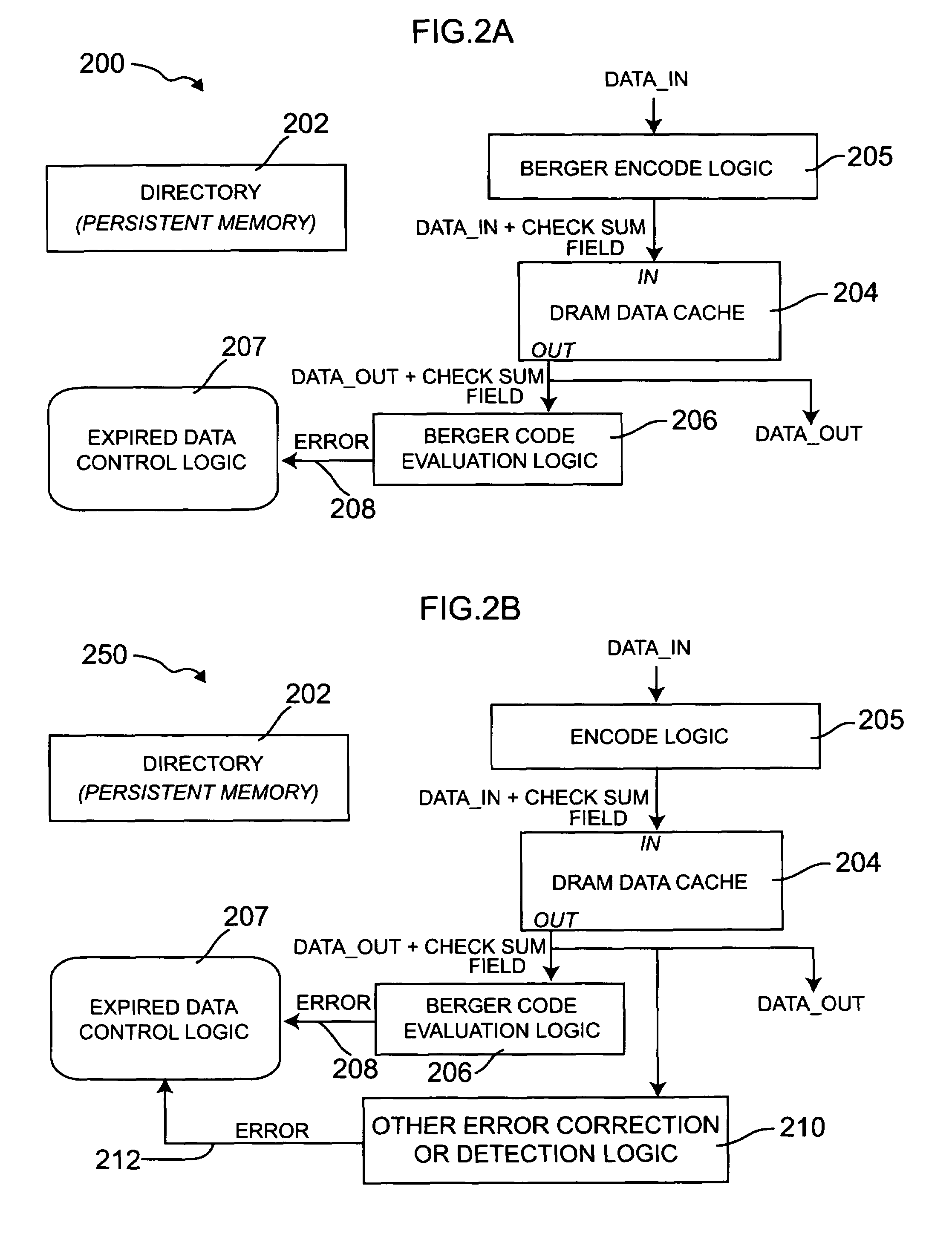Dynamic memory architecture employing passive expiration of data
a dynamic memory and data technology, applied in the field of memory devices, can solve problems such as reducing memory and/or processing bandwidth, and achieve the effect of substantially reducing the cost of manufacturing a cache memory in accordance with the techniques of the present invention
- Summary
- Abstract
- Description
- Claims
- Application Information
AI Technical Summary
Benefits of technology
Problems solved by technology
Method used
Image
Examples
second embodiment
[0034]FIG. 2B is a block diagram depicting an exemplary cache memory system 250, formed in accordance with the invention. The cache memory system 250, like cache memory system 200 shown in FIG. 2A, employs a passive expiration methodology for detecting expired data stored in dynamic memory associated with the cache memory system. Unlike cache memory system 200, however, the exemplary cache memory system 250 is suitable for use where bidirectional errors are present. Bidirectional errors, which are characteristic of static random access memory (SRAM), may be defined as a mixture of one-to-zero and zero-to-one errors (often referred to simply as “errors”). Hence, an implicit notion in existing cache literature, which is generally predicated on SRAM, is that errors are essentially always bidirectional. Bidirectional errors may be detected using, for example, standard parity check codes which will detect, although not necessarily locate, an odd number of errors. More powerful error corr...
third embodiment
[0038]FIG. 4 is a block diagram depicting an exemplary cache memory system 400, formed in accordance with the invention. The cache memory system 400, like the cache memory architectures shown in FIGS. 2A and 2B, employs a passive expiration methodology for detecting expired data stored in dynamic memory associated with the cache memory system. Cache memory system 400, like cache memory system 250, is configured to handle bidirectional errors. Cache memory system 400 preferably comprises a directory 404, which preferably holds requested addresses and indicates whether or not data corresponding to the addresses is stored in the cache memory system, a time stamp memory 406, which preferably holds refresh status bits, a timer 418, or alternative counter, a DRAM data cache 410, or alternative dynamic memory, hit logic 408, and refresh control logic 402. In contrast to the cache memory systems 200 and 250, cache memory system 400 does not employ Berger encoding. Rather, the passive expira...
PUM
 Login to View More
Login to View More Abstract
Description
Claims
Application Information
 Login to View More
Login to View More - R&D
- Intellectual Property
- Life Sciences
- Materials
- Tech Scout
- Unparalleled Data Quality
- Higher Quality Content
- 60% Fewer Hallucinations
Browse by: Latest US Patents, China's latest patents, Technical Efficacy Thesaurus, Application Domain, Technology Topic, Popular Technical Reports.
© 2025 PatSnap. All rights reserved.Legal|Privacy policy|Modern Slavery Act Transparency Statement|Sitemap|About US| Contact US: help@patsnap.com



